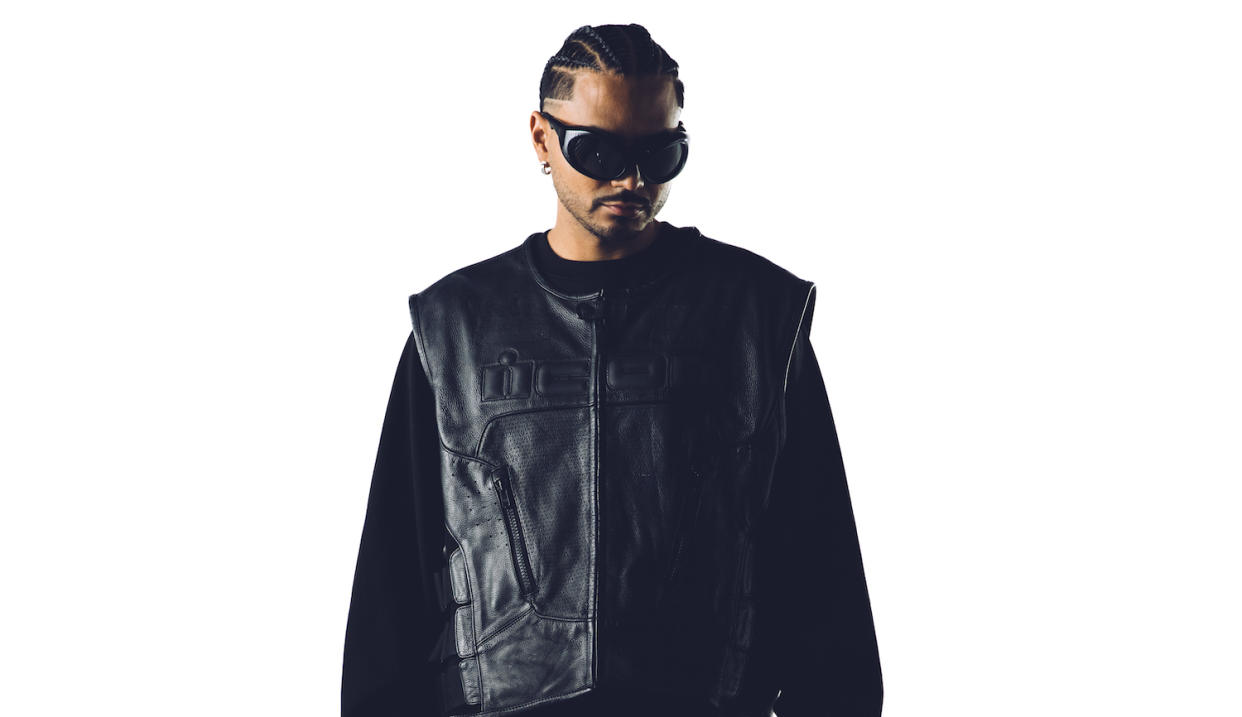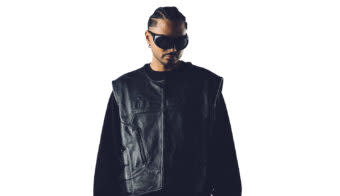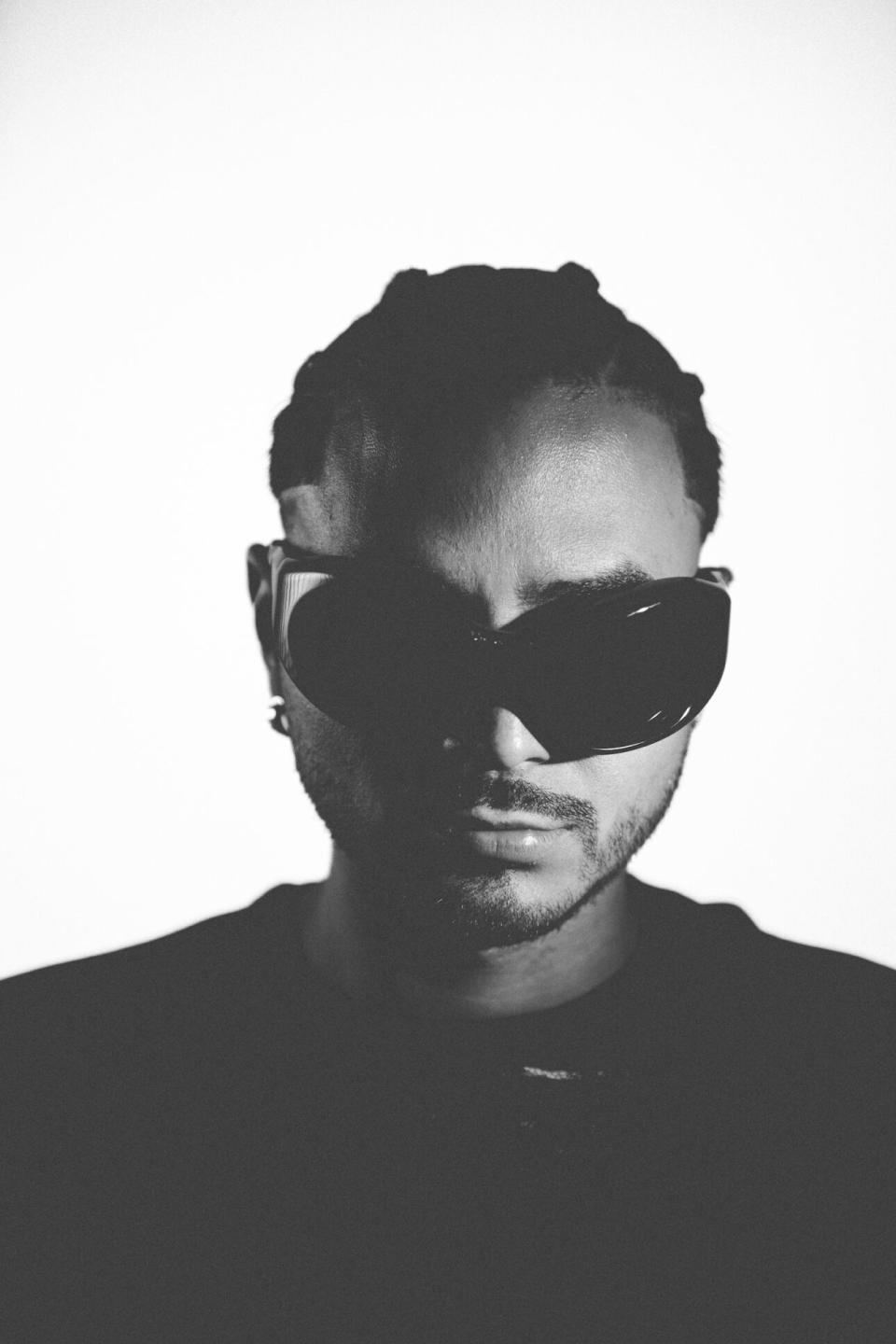Álvaro Díaz’s Alternative Takeover of Reggaeton Is Here


Álvaro Díaz is always looking toward the future. While speaking with SPIN from Tokyo, where he is promoting his new album Sayonara (out on May 17), he pulls out a notebook in the shape of the original PlayStation, which contains ideas for his next album. The rising Puerto Rican star has become a visionary in Latin urban music for his hip-hop and rock-infused spin on reggaeton. With over 9 million monthly listeners on Spotify, Díaz is ready to usher in the era of the alternative reggaetonero artist.
“It’s my most alternative album, but at the same time, it’s my album with the most reggaeton in my whole career,” Díaz says about Sayonara. “I took on the challenge of exploring different things on my last two albums just to go a different route. It was more fun for me and the good thing is people are liking it.”
With Sayonara, Díaz continues to expertly fuse elements of rock, trap, house, electronica, and reggaeton music. Before leading the alternative reggaeton scene, he was born Jorge Álvaro Díaz Rodríguez in San Juan, Puerto Rico. As a child, he grew up amidst the reggaeton boom happening on the island. While selling tickets to reggaeton parties for minors, Díaz was plugged into a different sound: the pop-punk anthems of Blink-182.
“My favorite band ever was Blink-182,” he says of the pop punk icons. “They were the first artist I had a poster of in my room. That’s when I fell in love with music. I remember having the [Enema of the State] CD and playing it loud and on repeat.”

After learning to play songs by Blink-182, Deftones, and Incubus on the bass, Díaz also leaned into hip-hop by artists such as Kanye West, Calle 13, Lupe Fiasco, and later Kid Cudi. As a rapper and singer, Díaz wanted to combine his influences and push Latin urban music into an alternative and hip-hop direction. His vision was too adventurous for anyone to take a risk on him, so he uploaded his experimental tracks to SoundClick and later SoundCloud. Díaz’s songs grew a following that included Rauw Alejandro. Díaz claims he helped spur a “super special movement of SoundCloud in Puerto Rico” with Bad Bunny and Alejandro later jumping on the platform to get showcase their songs. Díaz forged a friendship with Alejandro that led to collaborations like “Problemón” and more recently, “BYAK” on Sayonara.
“I just remember one day, me and Rauw hyping each other up, telling each other that you’re going to make it,” he says. “I remember dreaming together, and when you see how it’s turned out for us, it’s fun. It’s always good to win, but when you win with your brothers, it’s more special.”
Around 2017, Díaz signed with Universal Music Latin and continued to build hype around his music through mixtapes and EPs. In 2021, Díaz fully realized his alternative vision of reggaeton with his breakthrough album Felicilandia. The cover art depicted a Disneyland-like theme park with his cartoon crocodile logo taking Mickey Mouse’s place. Three years later, the Sayonara cover art revisits that scene now in shambles and up in flames. Díaz admits that a breakup inspired his new album.
“I did this album called Felicilandia, which was my way to find happiness,” he says. “Sayonara is my way to say goodbye to that happiness that I thought I found. I didn’t know I was writing about my life. This is what I was feeling. At first, you’re trying to go numb, trying to pichear [forget about it], and trying to ignore all these feelings.”
The album opens with the trip-hop of “Te Vi En Mis Pesadilla” where he sings facing the nightmare of his relationship ending. Díaz then tries to party the pain away in the house-inflected bangers “Fatal Fantassy” with reggaeton architect Tainy and “PLN.” He also teamed up with another underdog that has gone global, Colombian star Feid, on “Gatitas Sandungueras Vol. 1,” which is reminiscent of the classic reggaeton sound from the 2000s.
“We’ve known each other for a couple of years, probably before the Alvarito Díaz and Ferxxo eras began,” Díaz says. “We were on the come-up together, knowing that we deserve so much more. He felt that way for me and I felt that way for him. Every time we get to the studio together, I think it’s magic.”
Díaz tries to win back his ex with the pop-punk song “Ramona Flowers,” inspired by Scott Pilgrim vs. the World character. While showing off his arm tattoo of Flowers’ phone number from the movie, he admits, “I’m a Michael Cera stan!” In the Nirvana-esque grunge of the closing track “No Llores Si Me Voy,” he decides to move on. Sayonara is a goodbye to Latin urban music as we know it.
“Alternative artists, we know how hard it is for each other,” he says. “We support each other. I’m like, ‘If I can help these people the way I wished someone helped me, I’m just going to do it.’ I like how music is becoming that there’s no walls or boxes to put us in now. It’s just me evolving and I’m going to keep evolving.”
To see our running list of the top 100 greatest rock stars of all time, click here.

